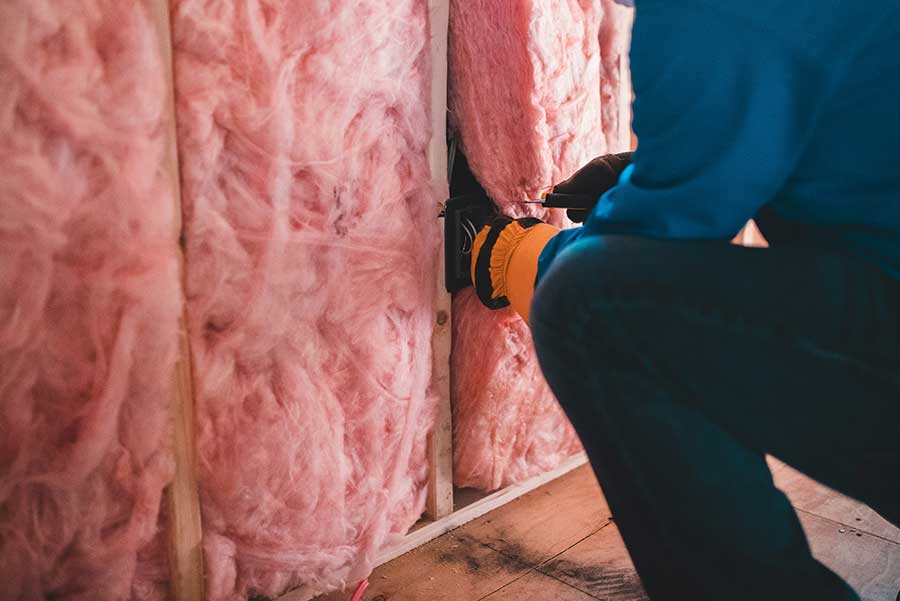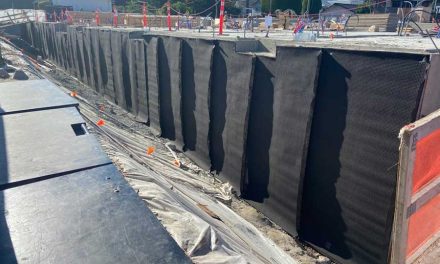Photo by Erik Mclean on Unsplash
Continuous insulation — insulation that provides a single, ongoing thermal barrier around the exterior walls of a building — can prevent moisture intrusion, reduce heat transfer, and improve energy efficiency. In fact, upgrading a building’s insulation has been found to result in energy savings of between 10% to 45%. Fortunately, the latest developments in insulative materials and technologies (such as, mineral wool, silica aerogel, and spray foam) are successfully being used to create comfortable living spaces with minimal risk of water absorption and damage.
Mineral wool
Mineral wool — also known as mineral fiber or man-made mineral fiber — is a new continuous insulation material that’s far superior to traditional types of insulation. Just as its name suggests, mineral wool is typically made from minerals like silica, stone, rock, and glass. To make mineral wool, these raw materials are first melted and processed into fibers. These fibers are then shaped into continuous insulation ready for use.
Mineral wool insulation is water-repellent (so mold, mildew, and fungi aren’t a concern), and allows vapor to pass through. It’s also fire-resistant — for example, stone wool melts at around 1800° F and provides fire protection for up to at least four hours, whereas glass mineral wool can withstand temperatures up to roughly 1100° F. A good example of mineral wool’s capabilities is its installation in the Museum of the Moving Image in Astoria, New York City. “Mineral wool was exposed to three seasons of rain, sleet, snow, wind, and sun before the cladding was installed”, explains Architect Magazine. “The mineral wool panels emerged virtually unscathed, a remarkable outcome”.
Silica aerogel
Aerogel — a unique, ultra-light material made of up to 99.98% air — weighs just 160 grams per cubic meter, which makes it the lightest solid material and insulator currently known to man. Aerogel is commonly made of water-repellent silica, although other sustainable aerogels made of plastic waste are also currently in development. Silica aerogel contains minute, 3D clusters of silica along with at least 97%+ air. As this air remains largely in place within the structure, without much room to move around, conduction and convection are both prevented. Silica aerogel is therefore the most effective continuous insulator out there, with an impressive R-value of at least ten per inch of thickness.
In addition to continuous insulation like aerogel, air conditioning (AC) units can also further help control indoor temperature, remove moisture from the air, and keep homes comfortable. However, AC units need to be well-maintained to stay working optimally. In some cases, maintenance can be as simple as giving the system a quick reset. For example, if the unit stops cooling properly, a reset can fix this glitch and improve energy efficiency. But even though a reset is usually a simple enough job, it’s important to prioritize safety as these units can pose a potential fire risk. In fact, AC units cause around 140 injuries and $82 million in property damage annually as a result of poor maintenance and handling. So, always read the manufacturer’s instructions before proceeding with a reset, and take the correct steps to protect the unit and prevent safety hazards. And if it’s giving you any ongoing problems, it’s always best to contact a professional HVAC technician.
Spray foam
Spray foam can also provide effective continuous insulation, particularly since it’s uniquely able to fill hard-to-reach places. Spray foam is typically made of polyurethane that’s first sprayed as a liquid, before it then hardens into a solid, insulating layer. Out of the two main types of spray foam (open-cell and closed-cell), closed-cell is the better insulator. It’s denser than open-cell, and contains separate gas pockets that work to slow down the movement of heat.
Closed-cell spray foam also acts as an excellent vapor barrier that doesn’t absorb moisture. Problems like moisture damage and mold can therefore be avoided by opting for closed-cell. Open-cell, on the other hand, allows some moisture to enter, which increases risk of damp and mold, so it’s not the best choice for exterior walls.
Continuous insulation is vital for creating comfortable, livable homes. Fortunately, new materials and technologies like mineral wool, silica aerogel, and spray foam can effectively prevent moisture intrusion, reduce heat transfer, and improve energy efficiency all in one.















